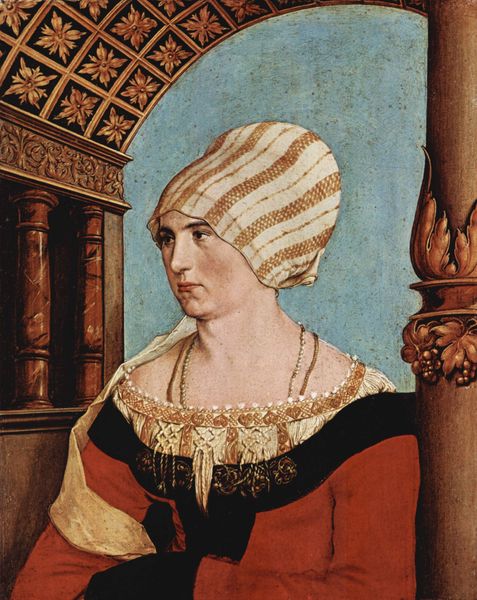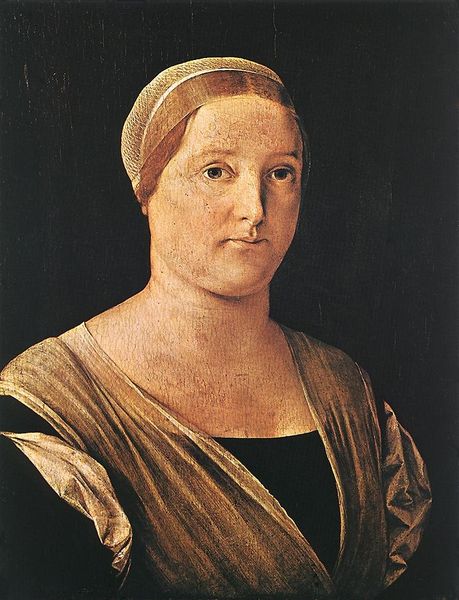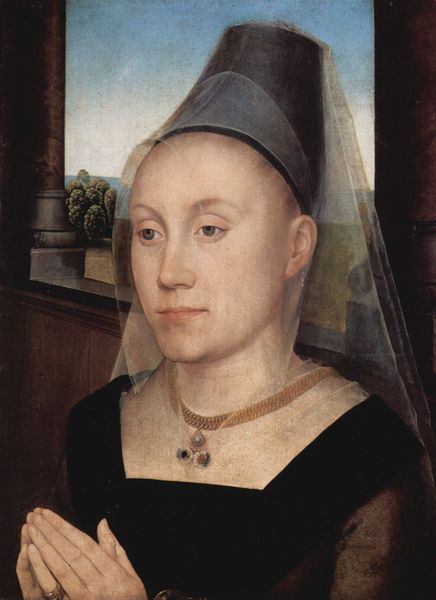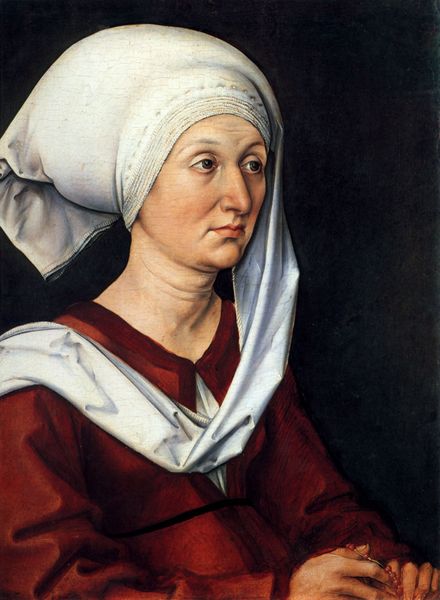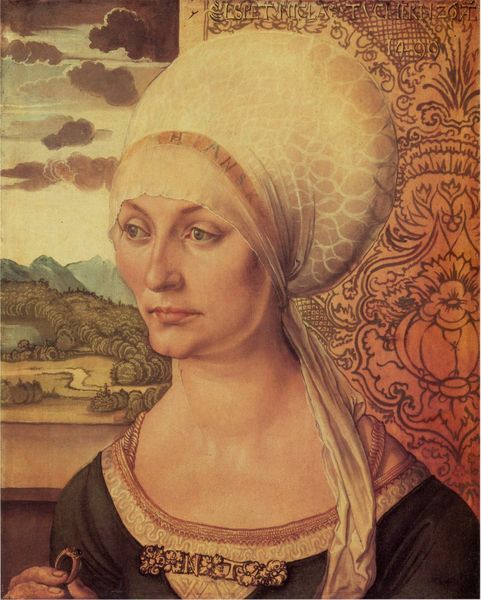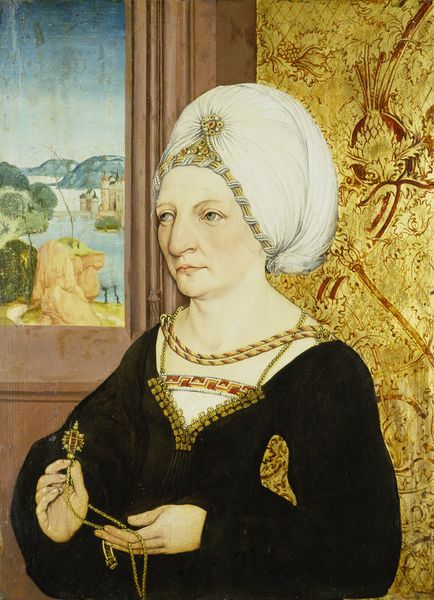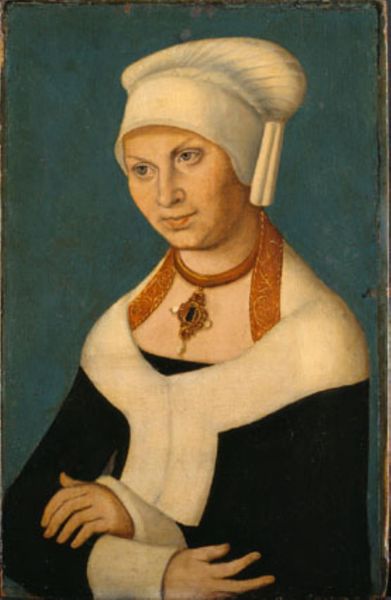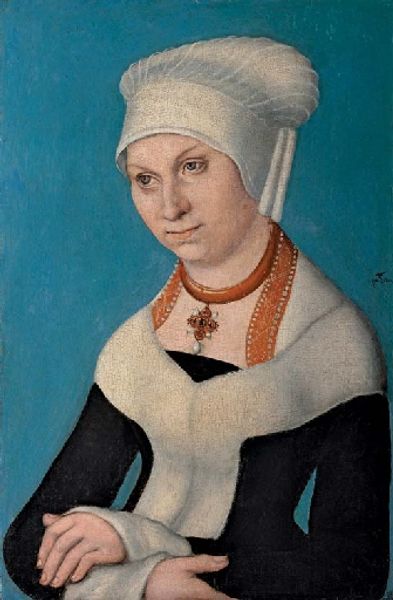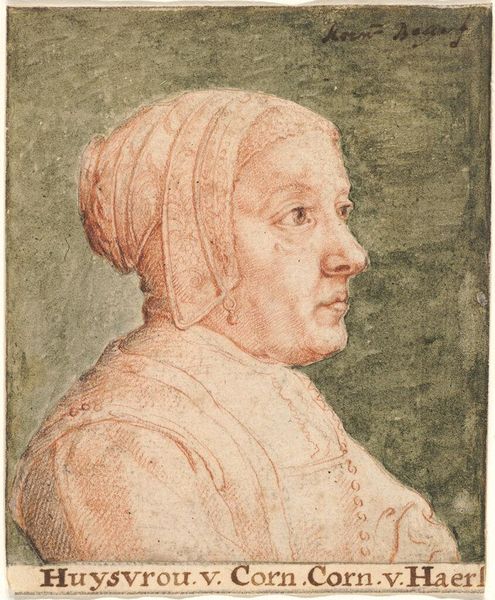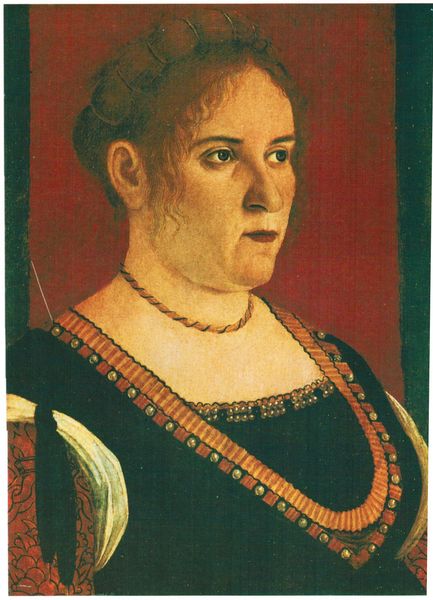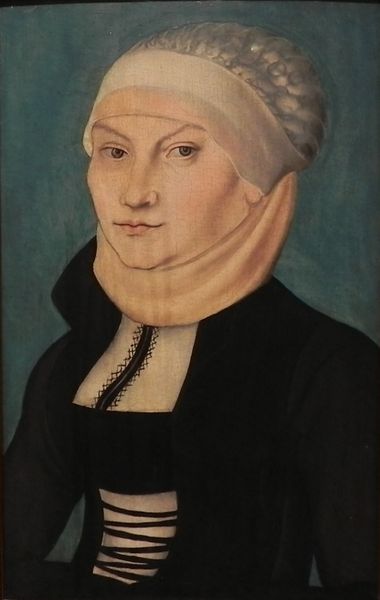
painting, oil-paint
#
portrait
#
painting
#
oil-paint
#
landscape
#
oil painting
#
northern-renaissance
#
lady
#
realism
Copyright: Public domain
Curator: Before us hangs Albrecht Dürer's oil-on-panel portrait of Felicitas Tucher, painted in 1499. The painting finds its home today here at Schloss Weimar. Editor: My initial feeling is one of reserved elegance, tinged with a hint of melancholy. Her gaze is direct but distant, and the cool tones evoke a sense of stillness. Curator: Absolutely. It's vital to understand the context here: Felicitas was part of a prominent Nuremberg family. Portraiture in this era wasn't merely about representation but a demonstration of social standing and lineage. The inclusion of the landscape background situates her within a worldly domain, while the decorative patterning around the painting reinforces her high status. Editor: Precisely. Observe how the details work to establish an image, every element is carefully placed for maximum symbolical resonance. The flower, the landscape behind, they must communicate important parts of her character and biography. Is that a carnation she’s holding? That would symbolize marital love, tying in with familial expectations. And what about the landscape… perhaps echoing her familial estates or perhaps her spiritual journey. The visual language of Northern Renaissance art like this painting carries profound weight, imbuing this image of Felicitas with cultural layers for us to consider and investigate. Curator: I agree completely, it is important to contextualize that there's often an idealized element in portraits such as this one; Dürer was showcasing both Felicitas's likeness and crafting a symbol of her position in society. So what seems to be her authentic appearance would've been modulated to flatter or underscore her status. The soft landscape also acts as a reminder of her wealth as land owner in 15th century. Editor: A fascinating interplay of the personal and the presentational! Seeing Felicitas through Dürer's carefully constructed image—it's not just about a pretty picture, it's a window into the Renaissance self and what that could project for eternity! Curator: Indeed, examining this portrait deepens our understanding of the intersection between art, society, and the individuals who navigated its complexities. Editor: Seeing how those visual cues create something timeless that reaches beyond their intended moment is the enduring power of visual imagery.
Comments
No comments
Be the first to comment and join the conversation on the ultimate creative platform.
